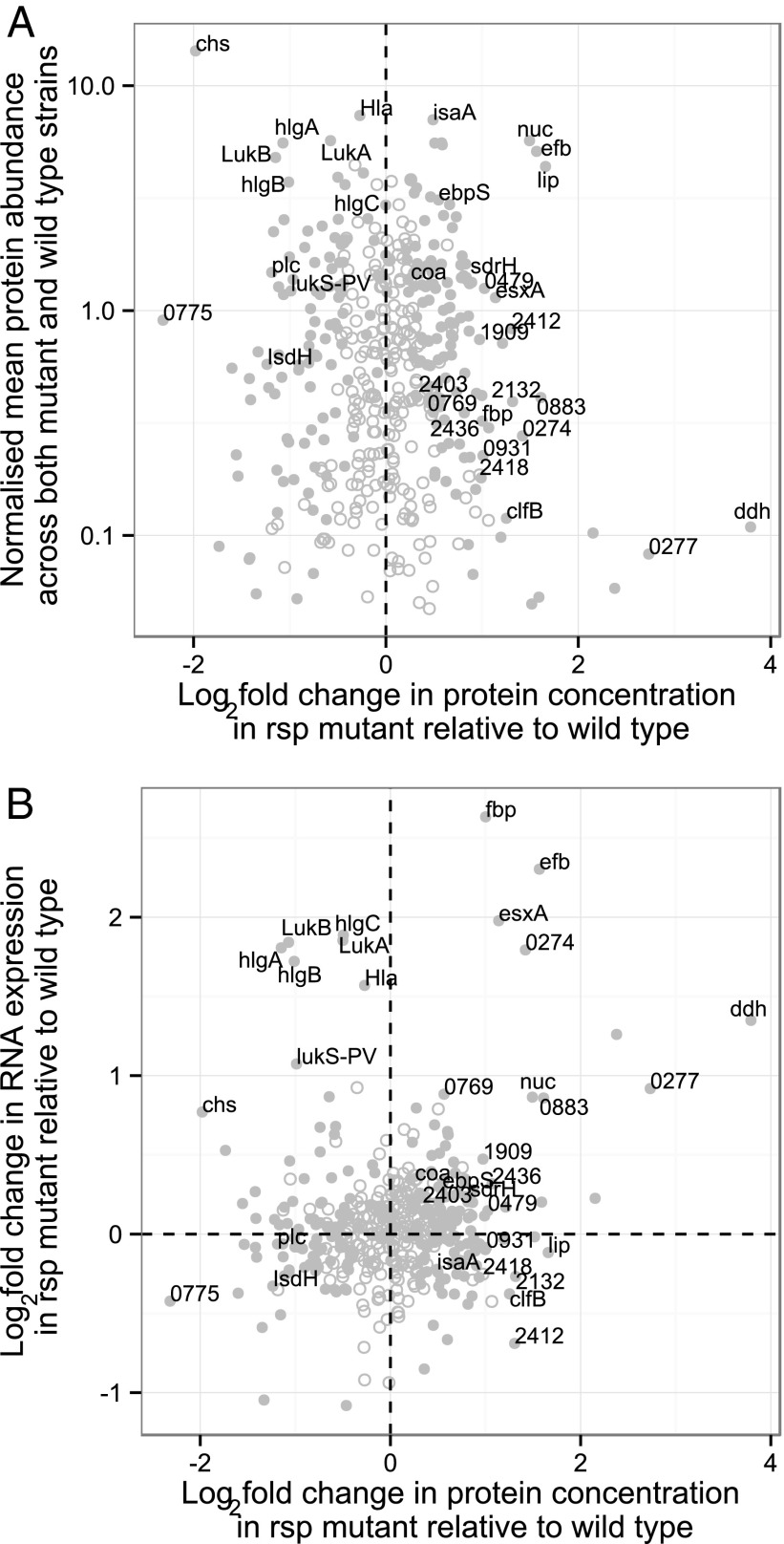Fig. 6.
Complex rsp-dependent control mechanisms influence toxin production. MS was performed on the supernatant of stationary phase culture of USA300 S. aureus wild-type and an rsp mutant. Fold-change in the protein concentration in rsp mutant relative to wild-type organisms (x axis) was compared with protein abundance in both wild-type and mutant organisms (A), and fold-change of RNA expression in rsp mutant relative to wild-type organisms (B), as derived from RNA-seq performed at the same time point. Each dot represents a gene, and numbers denote locus identifiers (e.g., 0274 refers to SAUSA300_0274). Open circles indicate that the effect of rsp is not significant (P > 0.05) for this gene, whereas filled symbols indicate that the effect of rsp is significant on that gene. The dotted lines indicate the condition where rsp mutation has no effect. In B, the upper right quadrant identifies genes that are increased in RNA as well as protein level. The upper left quadrant shows genes with increased RNA expression, but lower levels of protein in stationary phase. A number of important toxins, including Hla, HlgA, HlgC, and LukB, fall within this category.

